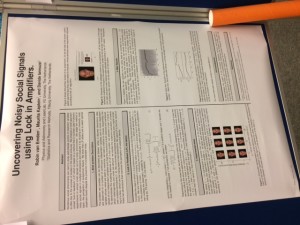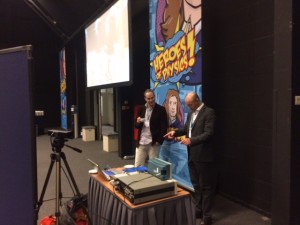Hi All,
The last few weeks have been busy teaching a new course called “Data Statistics”; I am teaching the course together with Prof. Dr. Edwin van den Heuvel and its pretty awesome. We will try to share the lecture notes here soon.
Also, good news, our (Robin van den Emden, Davide Iannuzzi, and Maurits Kaptein) paper on the decoy effect has been accepted by Palgrave Communications; we are awaiting the proofs and will than share a copy.
Finally, I have submitted an ERC starting grant application; here is the abstract:
“In 2011 Amazon.com listed the book The Making of a Fly for a mere $23,698,655.93 (plus $3.99 shipping). The incident is a famous example of autonomous decision making by computers gone awry. As humorous as this glitch may be, erroneous decisions by computers could well be far less amusing; what if your digital health assistant gives you the fully automated and fully personalized, but also quite deadly, recommendation to take 15 grams of paracetamol?
On the other hand, computers could be extremely helpful for making sequential decisions in the face of uncertainty. It is not far-fetched that a computer could learn the exact dosage of paracetamol that is best for you personally, outperforming your general practitioner. These algorithms already exist in a narrow sense; in online selling, for example, the prices of products are often automatically determined and personalized. However, these algorithms are not feasible outside the online selling domain since their success depends on assumptions that are violated in other domains. Furthermore, existing methods can be regarded as a “black box,” because it is unclear why a given result is produced. When similar methods are used in impactful domains such as healthcare, this lack of information is unacceptable: we need to keep the human in the loop to inspect, and possibly alter, computer-suggested decisions. Finally, when these algorithms are used to select personalized treatments, we need to ensure the privacy of the people involved.
Combining my expertise in human-computer interaction (HCI) and methods for sequential decision making, I have designed a research program to develop responsible methods for shared sequential decision making by computers and humans. The program is developed in four projects in which my team and I will relax current assumptions, allow humans to inspect and alter computer-generated decisions, and develop methods to ensure privacy when sequential decision algorithms are used to personalize treatments.”
Let’s see how that goes….
Finally, our data science program is alive and kicking with many cool events (check http://www.jads.nl), and my new book is coming up…


